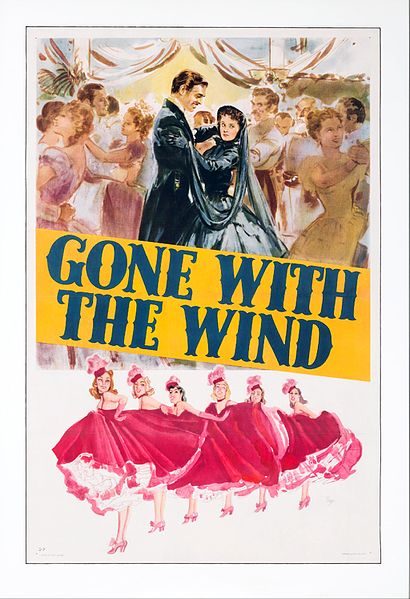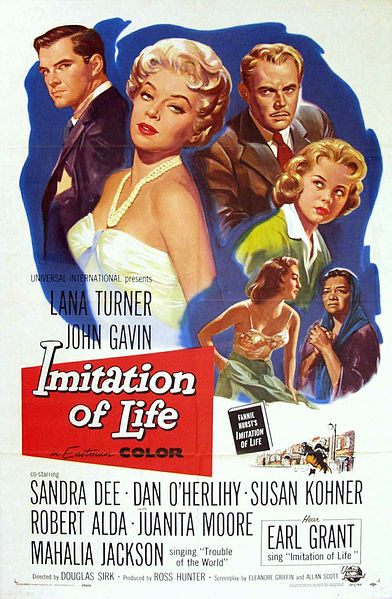
Thammasat University students who are interested in film studies, media and communication, sociology, culture, media and communication studies, cultural and social anthropology, history, business, and related subjects may find a newly available book useful.
Lexicon of Global Melodrama is an Open Access book, available for free download at this link:
https://library.oapen.org/handle/20.500.12657/56947
The TU Library collection includes other books about different aspects of melodrama.
A modern melodrama is a dramatic work in which emotional events are more important than presenting people as they really are. Melodramatic films have dialogue that is exaggerated and sentimental. Characters resemble types, instead of real people. In melodramas, event usually happen at home, dealing with morality and family issues, love, and marriage threatened by bad characters.
The publisher’s description of the book notes:
This new go-to reference book for global melodrama assembles contributions by experts from a wide range of disciplines, including cultural studies, film and media studies, gender and queer studies, political science, and postcolonial studies. The melodramas covered in this volume range from early 20th century silent movies to contemporary films, from independent ›arthouse‹ productions to Hollywood blockbusters. The comprehensive overview of global melodramatic film in the Lexicon constitutes a valuable resource for scholars and practitioners of film, teachers, film critics, and anyone who is interested in the past and present of melodramatic film on a global scale.

The introduction begins:
Welcome to the world of melodrama—and to the melodramas of the world. This book introduces nearly one hundred cinematic masterpieces from various periods and different cultural contexts—ranging from early Hollywood to emergent and popular Bollywood, from Latin American and New German Cinema to contemporary Nollywood, from classic melodrama and commercial blockbusters to arthouse film and meta-melodrama, while also encompassing a number of other local forms and styles in their hybrid or revisionist varieties. Our collection features discussions of seemingly timeless stories of love and loss, demonstrating the possibility and power of melodramatic plots to portray the overcoming of differences and antagonisms. Yet it also reveals how the melodramatic code is time and again used for asserting political claims and articulating critique—and hence for (re)producing powerful dichotomies of good vs. evil, innocence vs. corruption, virtue vs. vice. Melodrama performs and rehearses moral conf lict and emotional crisis management on a broad scale, involving intimate relationships and familial relations, on the one hand, and global constellations of oppression, violence, war, and regime changes, on the other. Thus, like no other genre, melodrama indeed makes the political personal and the personal political. […]
Many of the films presented in this volume are U.S. productions due to the early institutional prominence and power of Hollywood cinema, echoing Berlant’s verdict that the U.S. is and always has been »a sentimental nation.« However, the Lexicon of Global Melodrama includes films and (co-)productions from Argentina, Austria, Brazil, Canada, China, Denmark, Egypt, England, France, Germany (both East and West), Hong Kong, India, Iran, Israel, Italy, Japan, Kenya, Mexico, Mozambique, New Zealand, Nigeria, Peru, the Philippines, Poland, Portugal, Russia, South Africa, Spain, Sweden, Taiwan, Ukraine, and Venezuela. The collection thus offers a much broader perspective, establishes a global canon of melodrama (notwithstanding its local, regional, and national manifestations), and invites a comparative angle toward a type of film that for more than one hundred years has been one of the most popular, prolific, and commercially successful modes of cinematic expression while becoming ever more ubiquitous over the last decades. […]
Organized in chronological order rather than according to the logics of national or cultural provenance, this volume offers an overview of melodrama since the beginning of film in the early 20th century and shows it for what it is: a global phenomenon. While the book’s diachronic trajectory begins over 110 years ago, the synchronic coverage thickens from the 1990s onward. Not incidentally, the first film discussed here is D. W. Griffith’s silent film A Drunkard’s Reformation (1909), which ties the genre to the didactic agenda of social reform movements (here, the temperance movement) and enacts a tale of personal conversion through sentimental appeal. […]
This book clearly cannot include each and every Hollywood blockbuster. Instead, it discusses specific types of melodramas in exemplary fashion. At the same time, our aim is to move beyond a narrow Euro-American canon of the genre and to present the melodramatic in both its global reach and regional variety. Still, this collection is eclectic rather than exhaustive, and it invites further discussion and extension of its melodramatic canon. We hope this book will encourage interest in the phenomenon and discourse of global melodrama, in the growing scholarship thereof, and in the films themselves.
Here is part of a chapter on the well-known US film Casablanca (1942) starring Ingrid Bergman and Humphrey Bogart:
Despite all the superficial amusement in its rooms, Rick’s Café Americain is one thing above all: a waiting room for the thousands of refugees who f led to North Africa due to the war, and who are eagerly waiting there for a transit visa to Lisbon, from where they can travel to the U.S. And it is precisely these two things—transit papers, which finally come into Rick’s possession after the murder of two German couriers, and airplanes, as symbols of escape from the waiting room—that set the film’s plot in motion and also frame the film as a whole. Just as the plane taking off with Ilsa and Victor at the film’s end embodies the recovery from paralysis, Casablanca also opens with the sound of a plane landing, raising the hopes one of the couples waiting in Rick’s café that it might be a transport plane for refugees. This hope is shattered, however, when the camera reveals the Nazi symbols on the wings: It is the plane that takes Major Strasser to Casablanca to investigate the murder of the two couriers. Thus, Rick’s café initially remains a pure transit space, a »non-place« in the sense of French cultural anthropologist Marc Augé (1995), and it is unquestionably no coincidence that Augé has also written a book about Casablanca (2009). […]
That this is a global phenomenon and problem is made clear by the deliberate display of internationality among both staff and visitors in the Café Americain. In addition to the Moroccan employees, the Americans Rick and Sam, the French, and the Nazi Germans, there is also the Austrian waiter, Carl (played by S. Z. Sakall); the Russian bartender, Sascha (Leonid Kinskey); the Belgian croupier, Emil (Marcel Dalio); the Italian bar owner, Ferrari (Sidney Greenstreet); the older German and young Bulgarian refugee couples—and, of course, the Swedish Ilsa Lund and the Czech Victor Laszlo. The ensemble of characters does not only prove to be a genuine expression of a global melodrama but also reflects the internationality of a cast in which only three speaking roles were filled by U.S.- born actors.

(All images courtesy of Wikimedia Commons)
